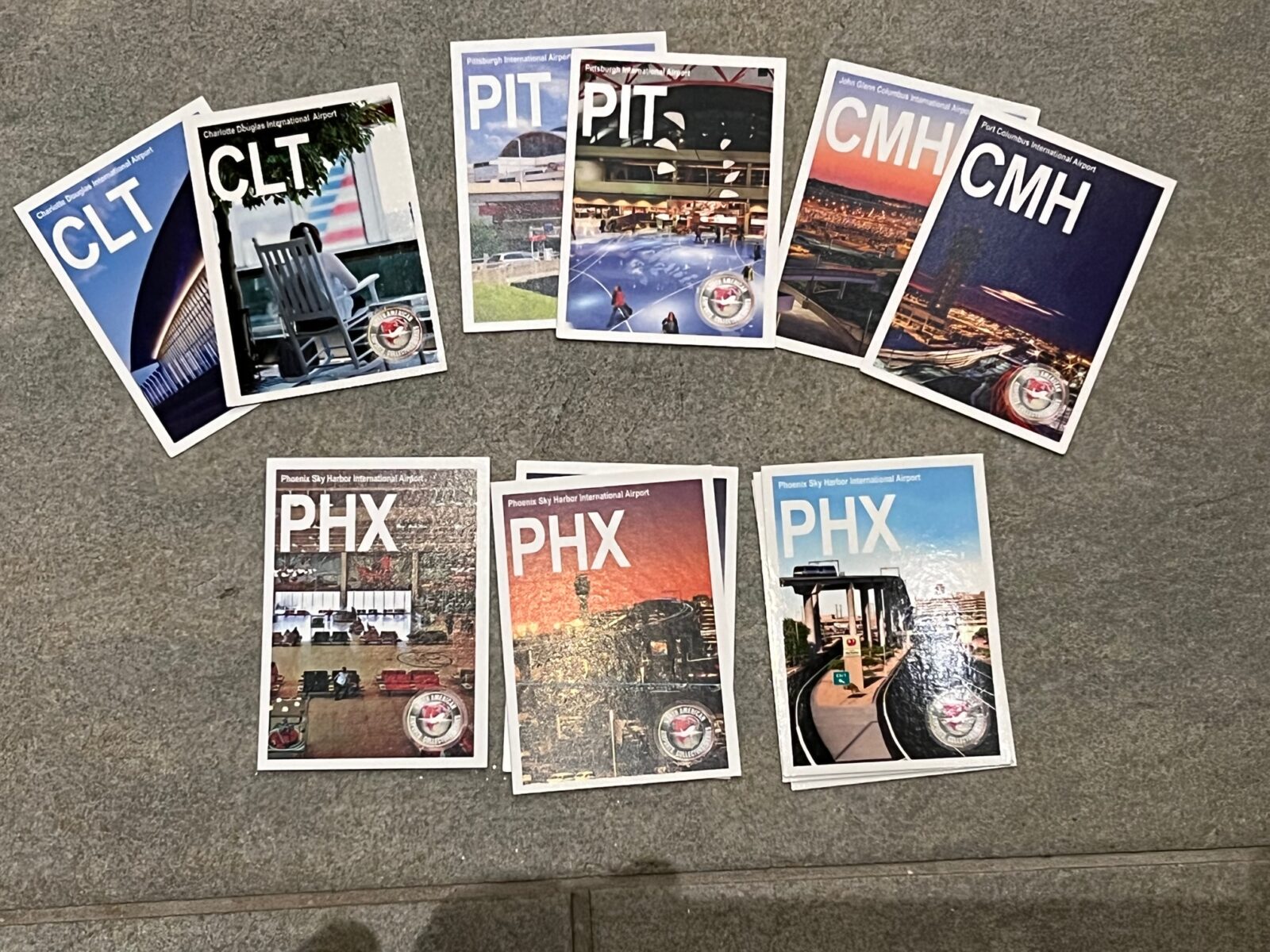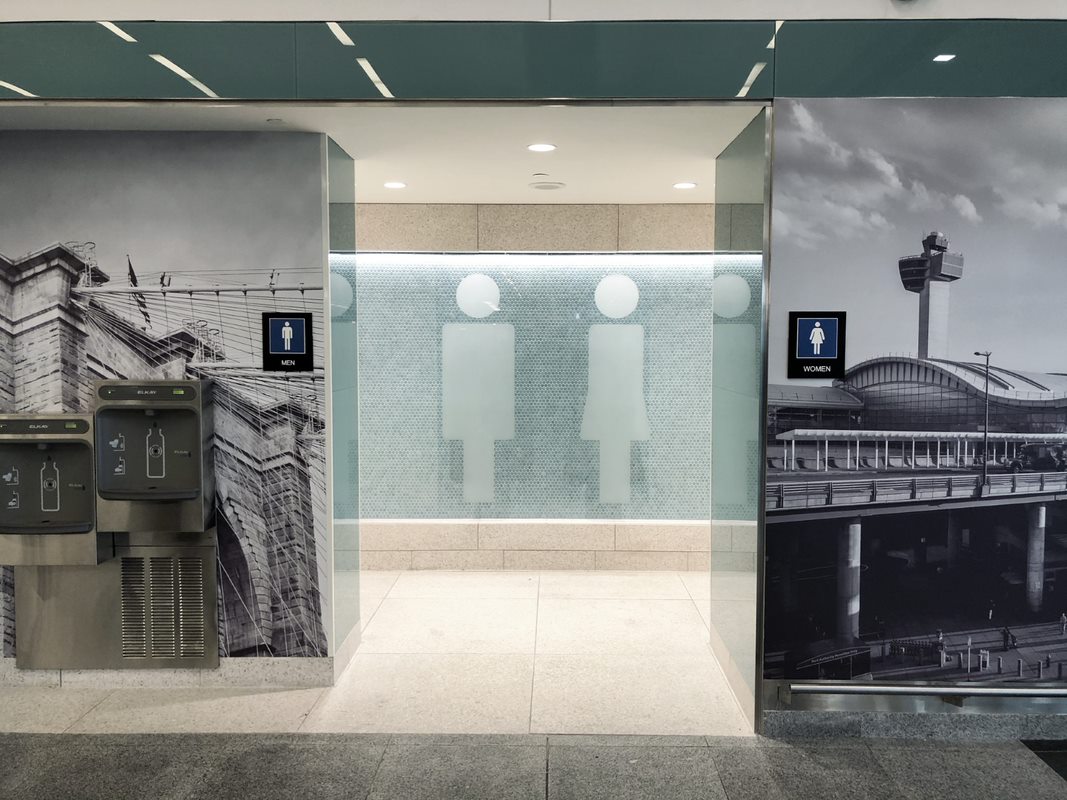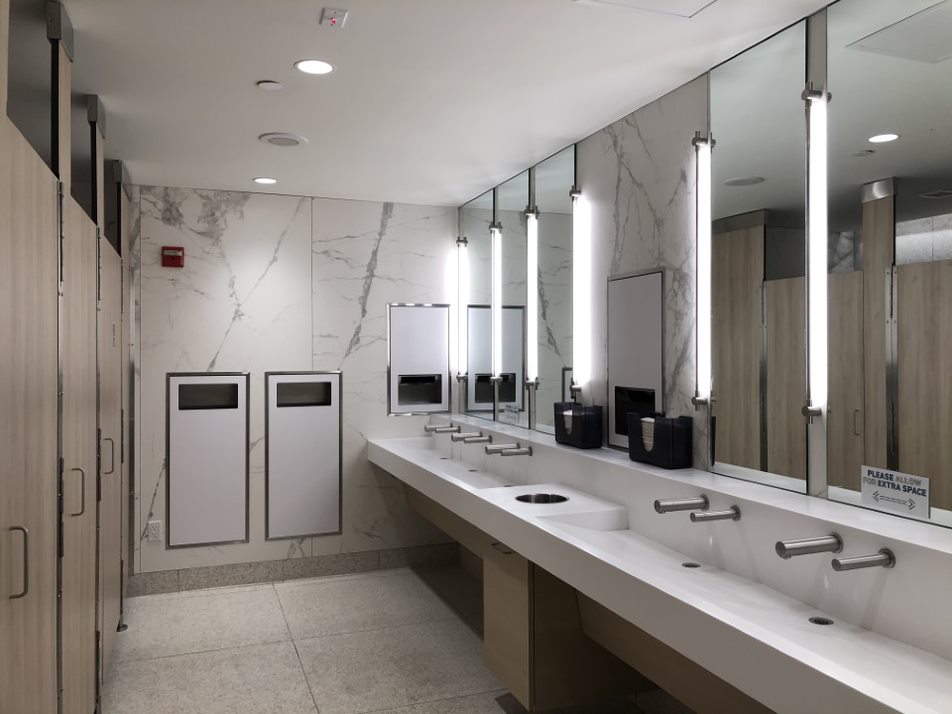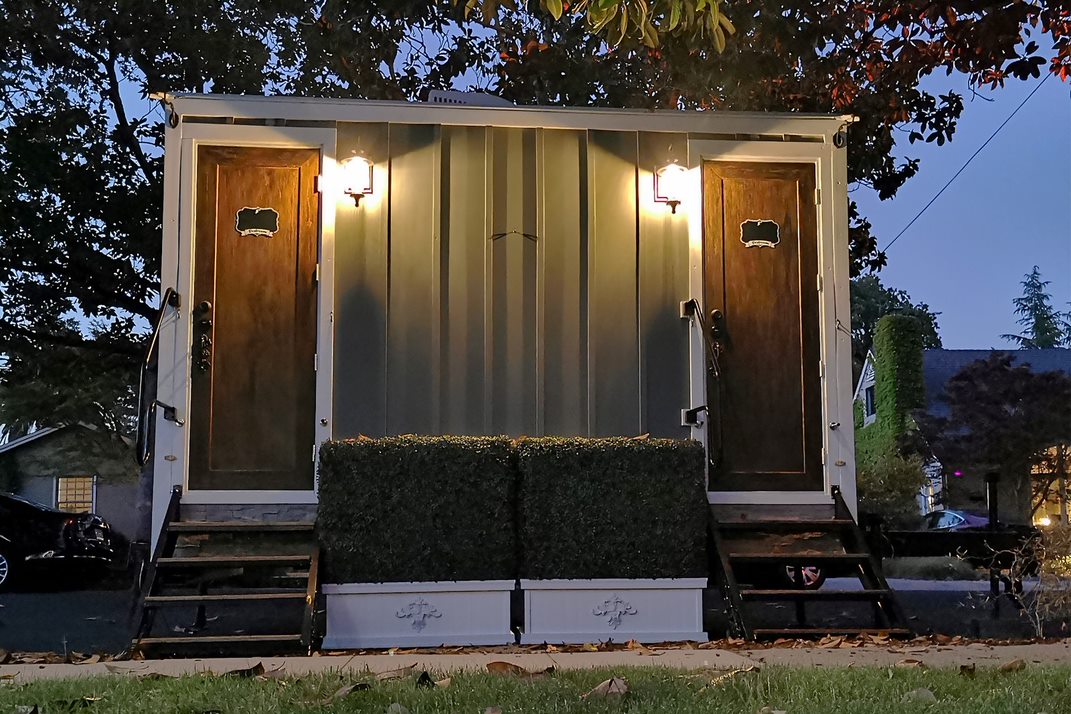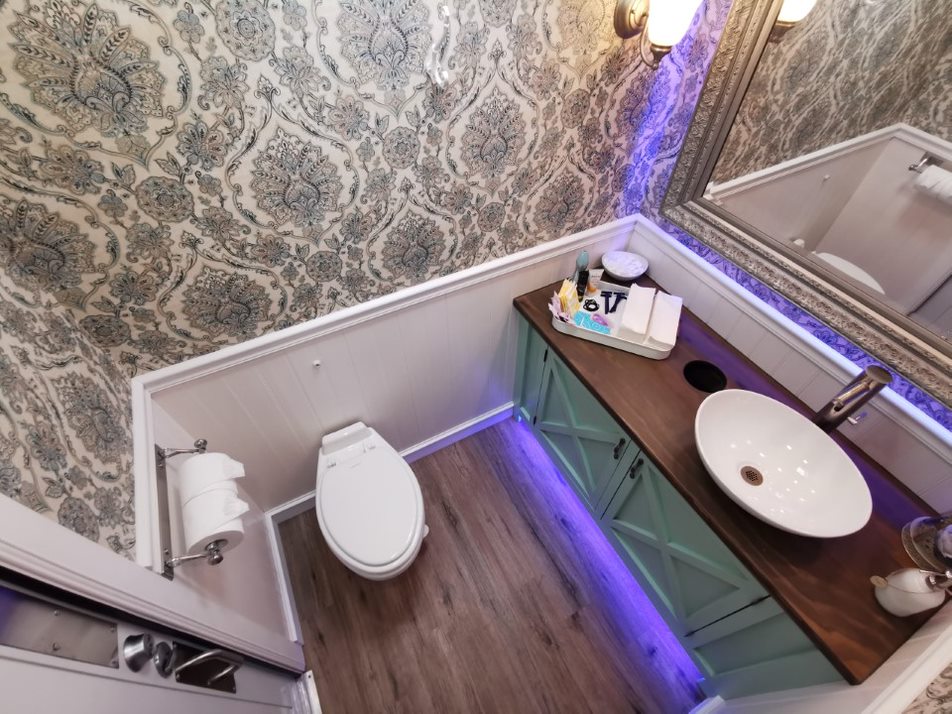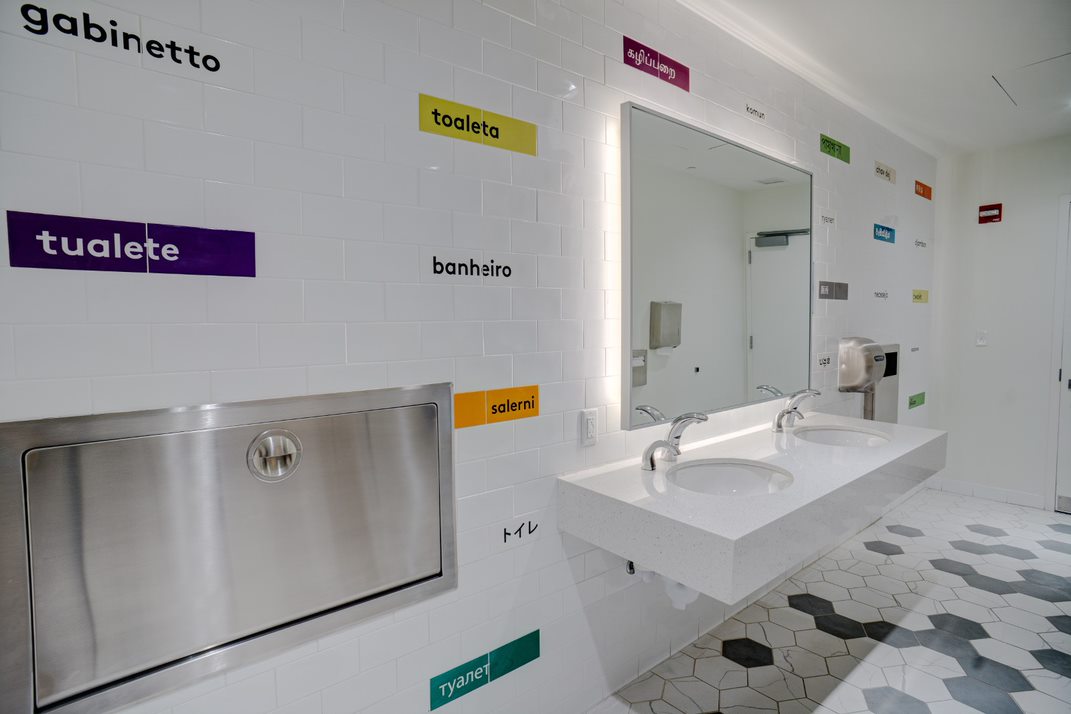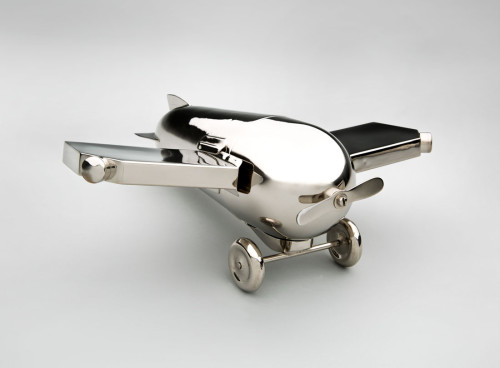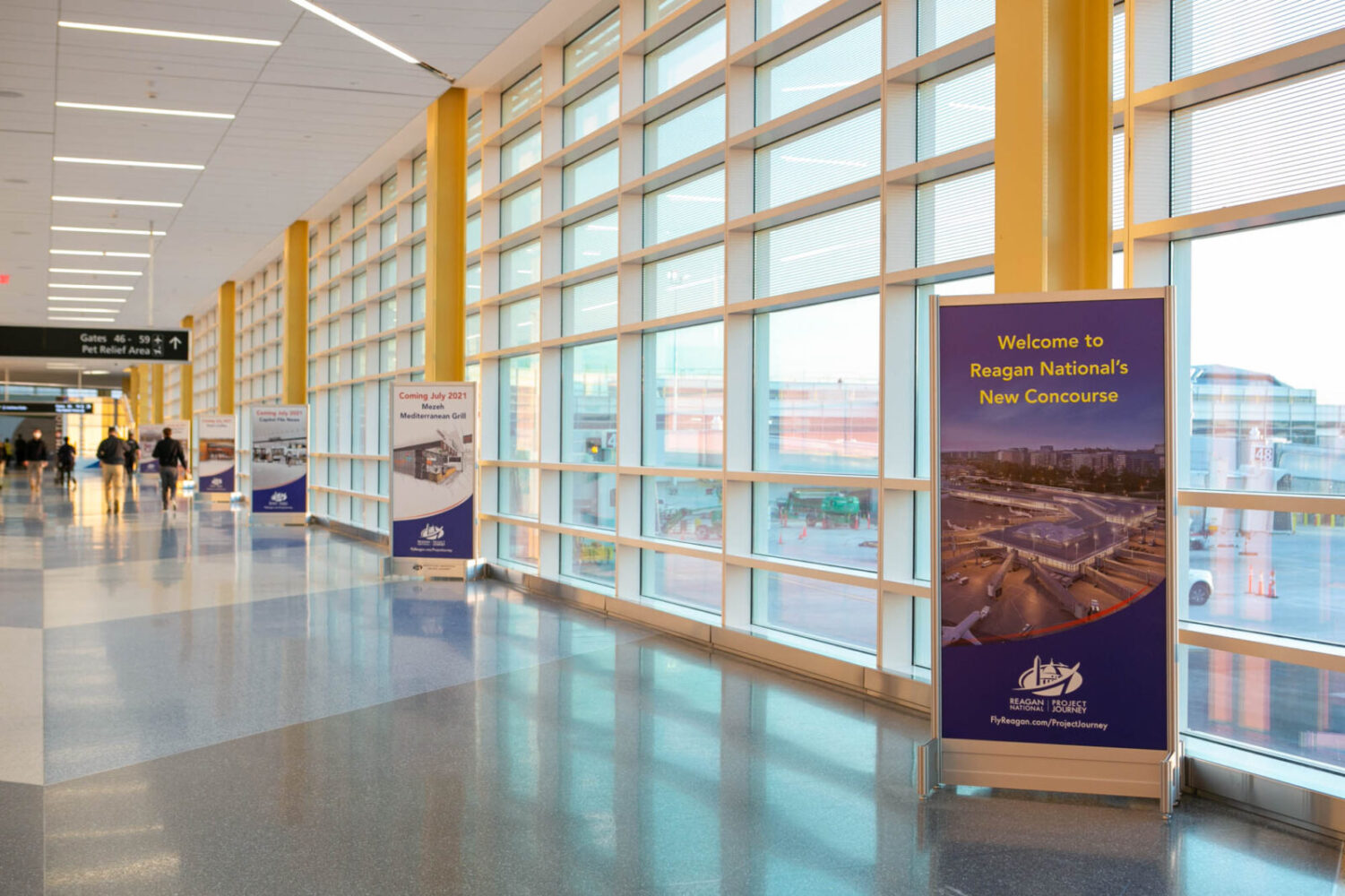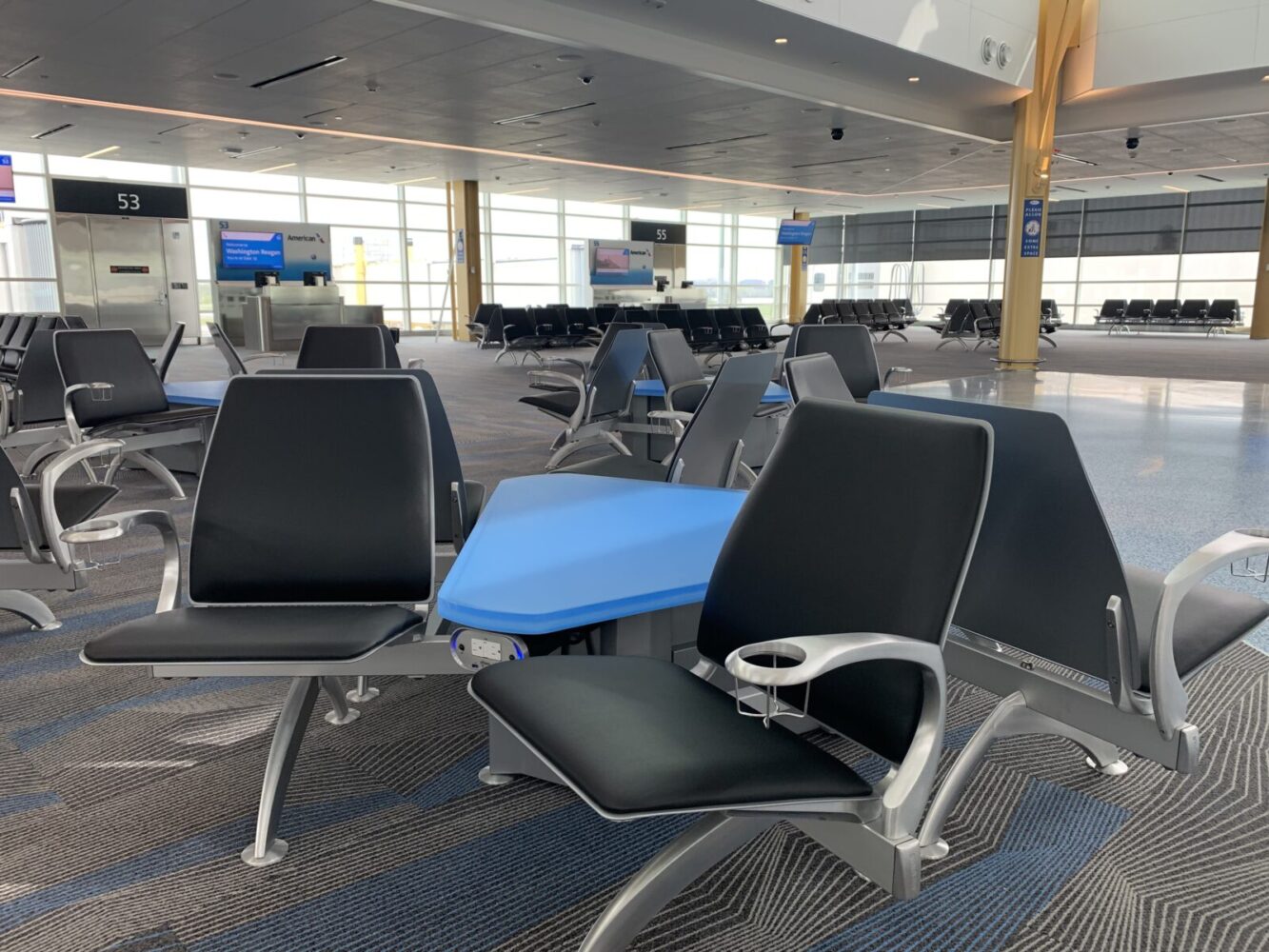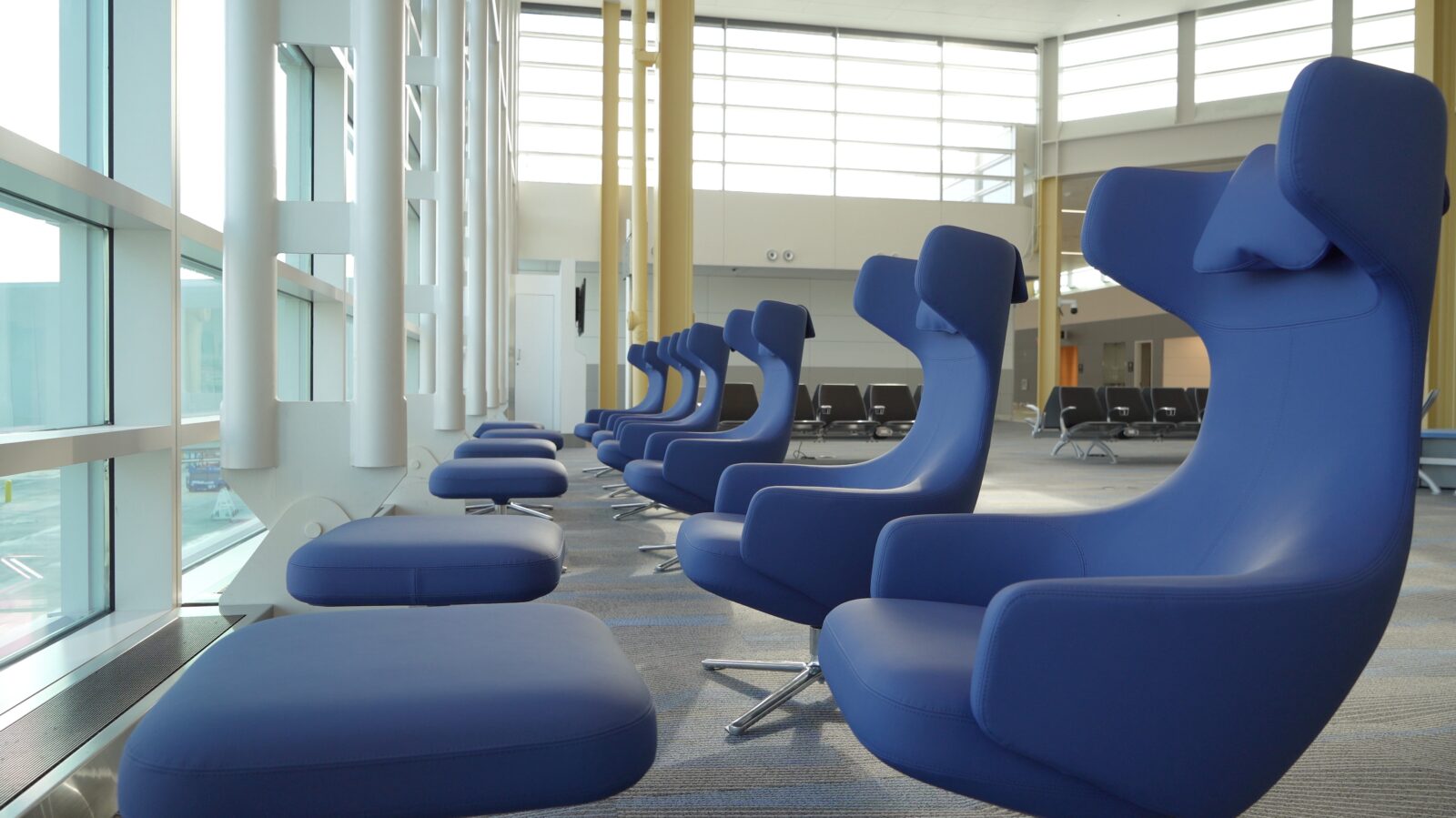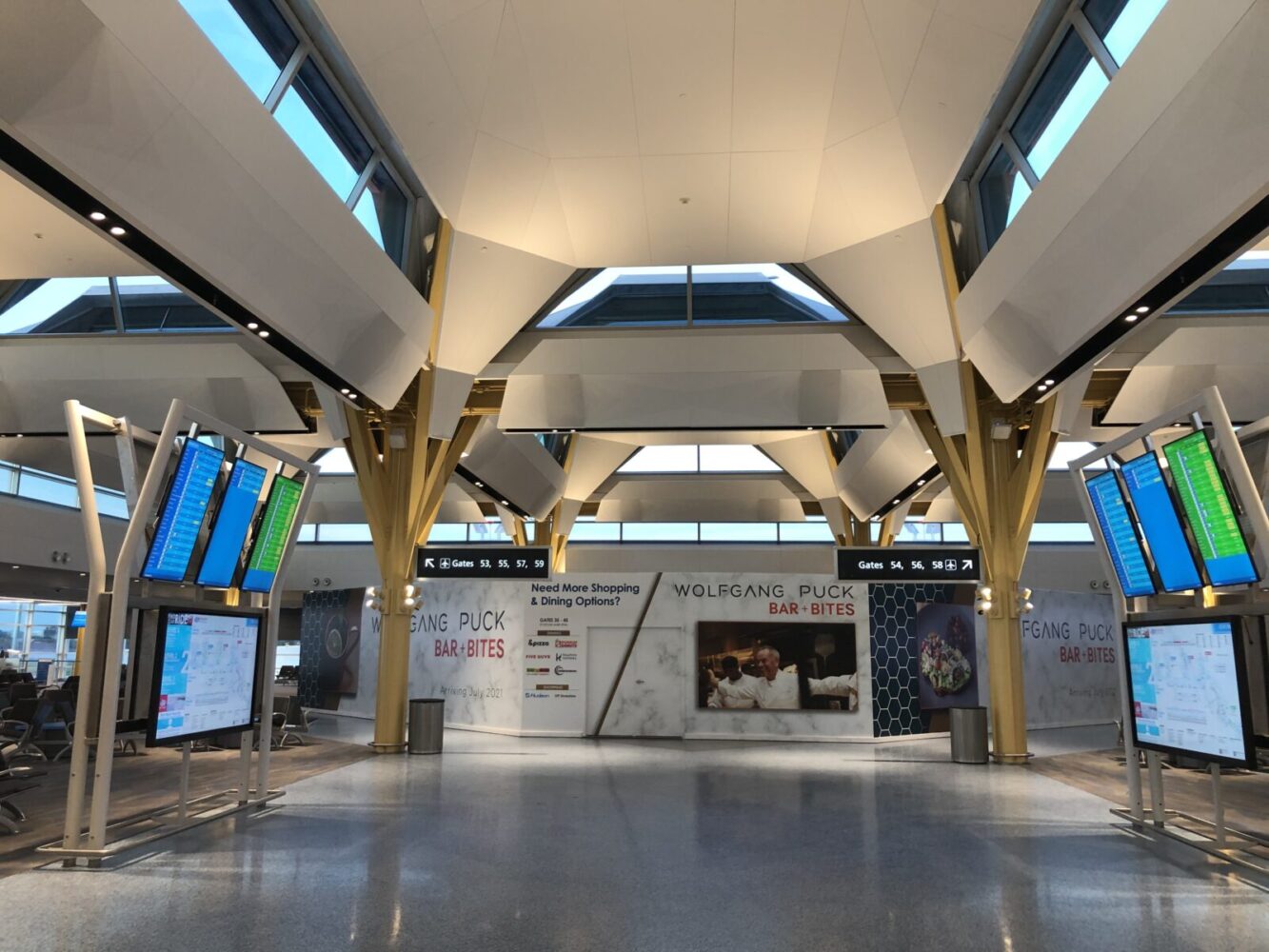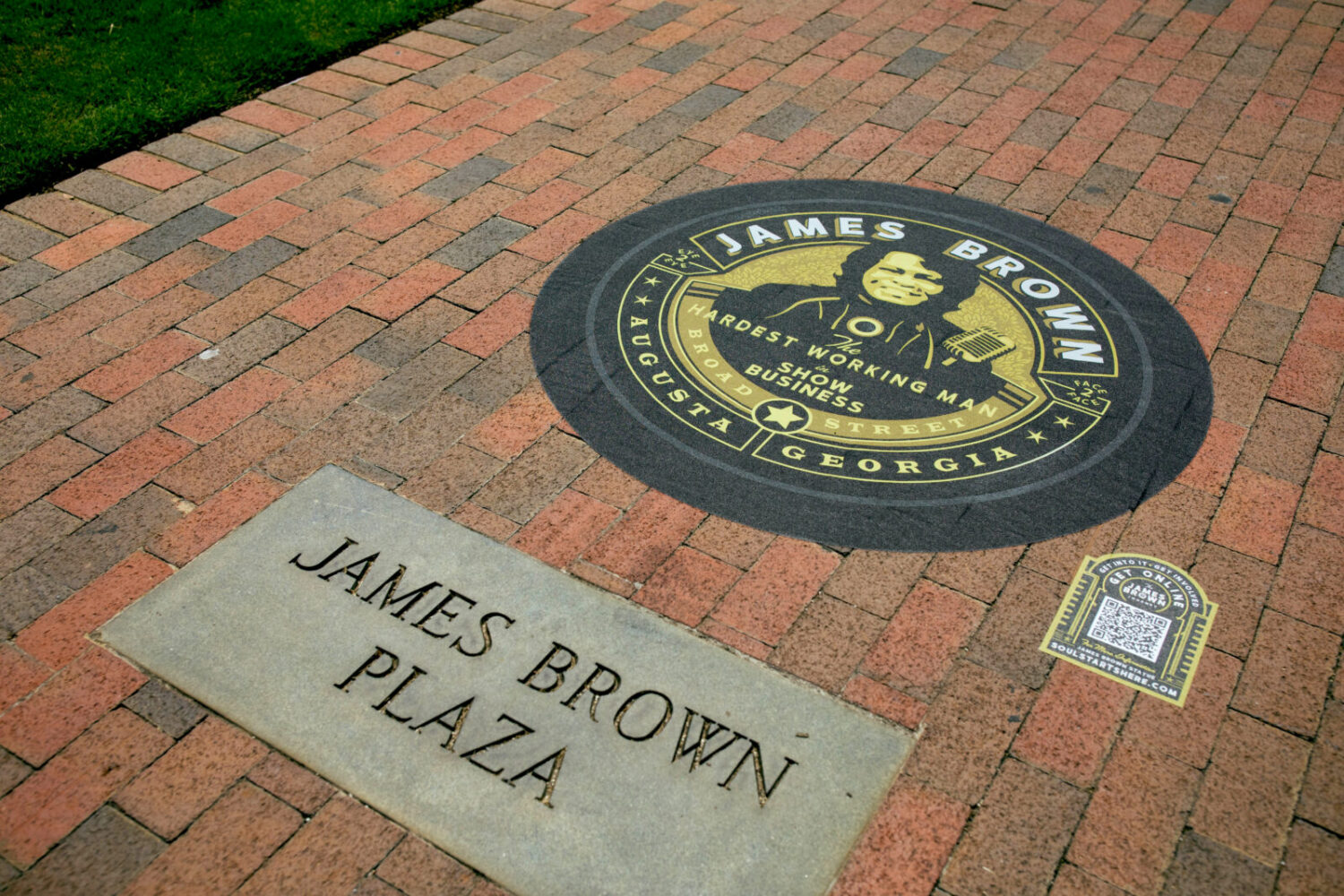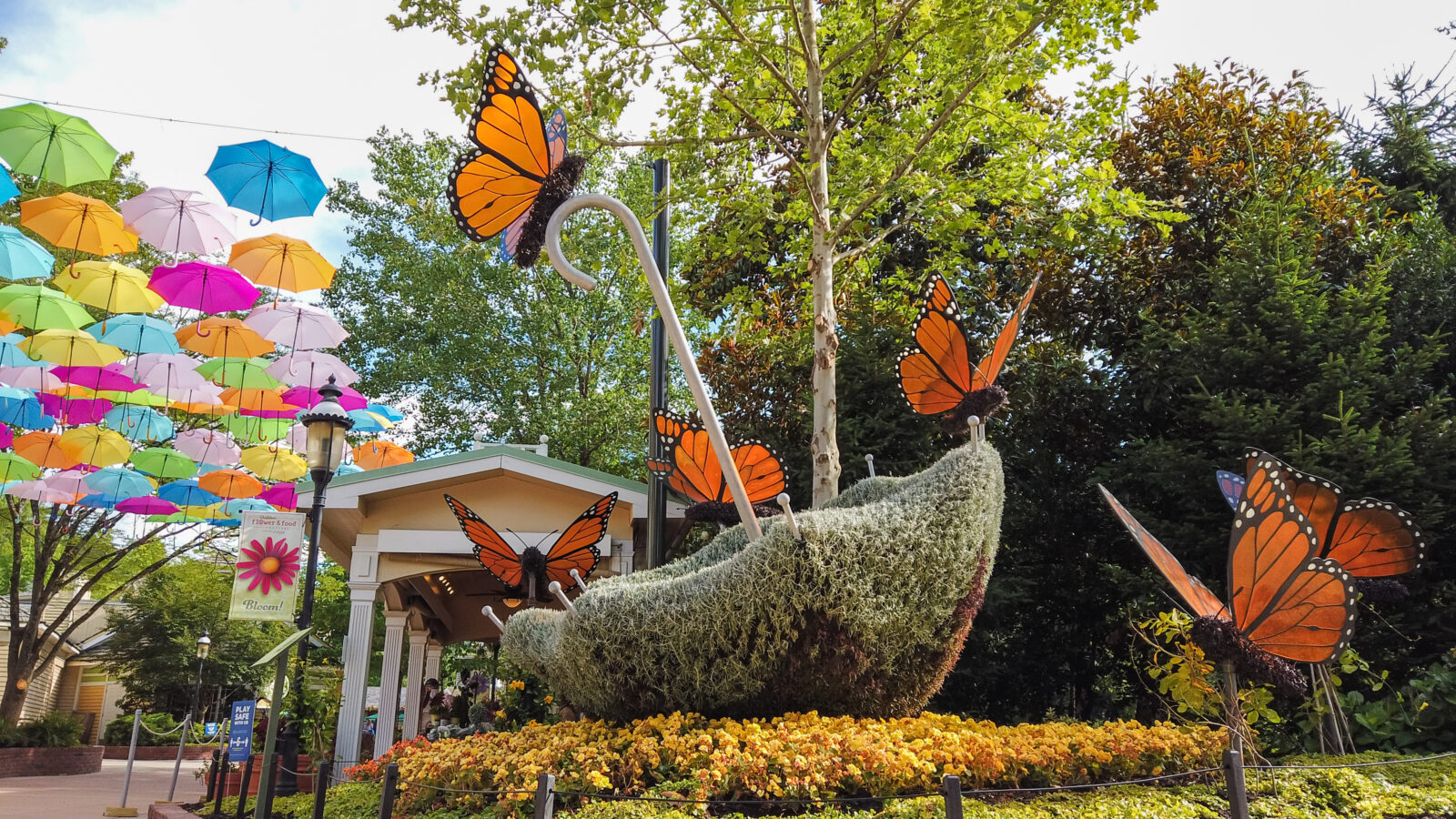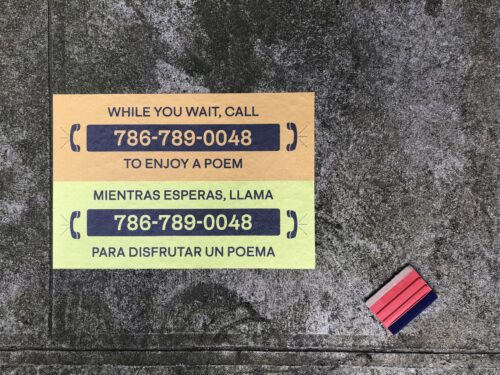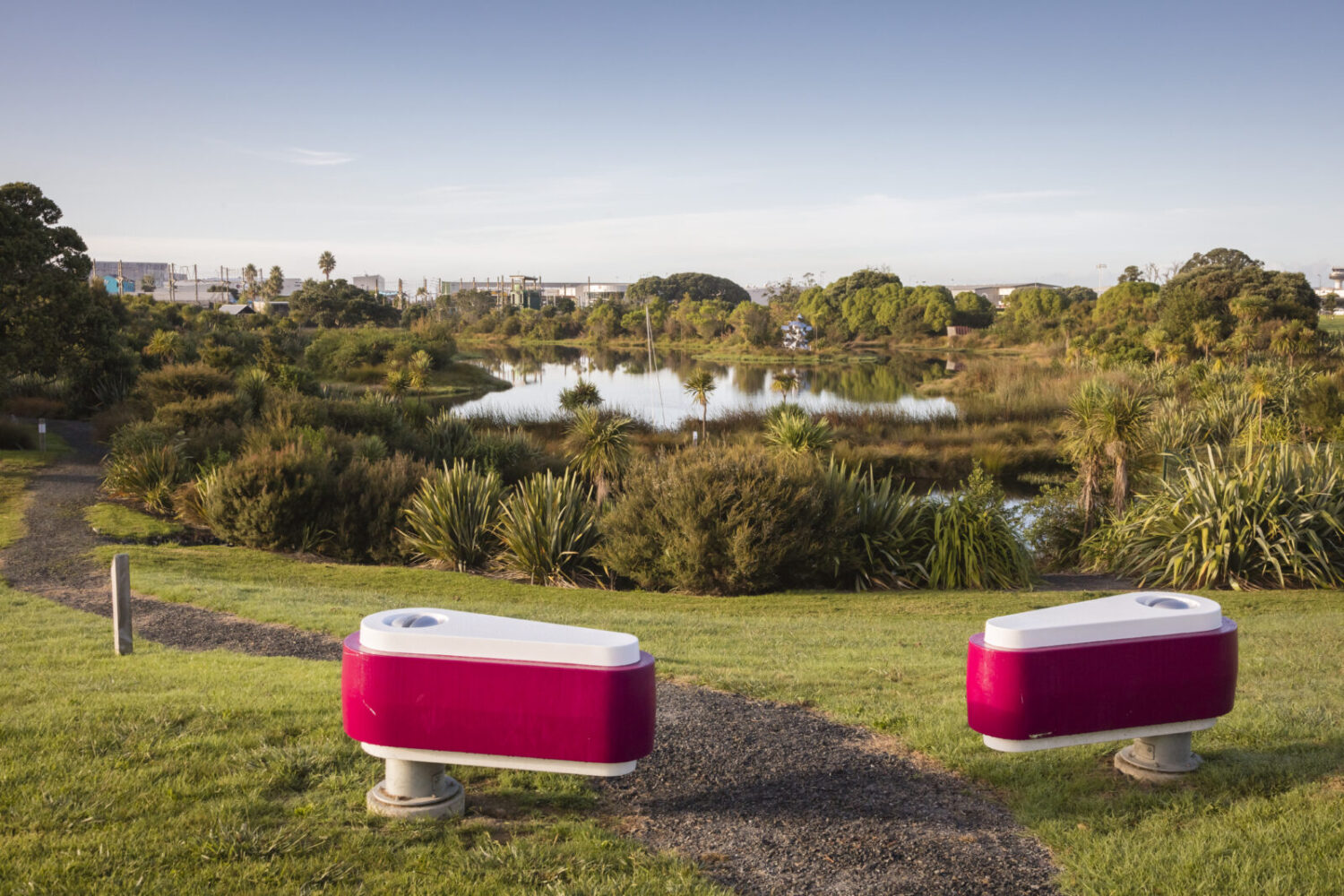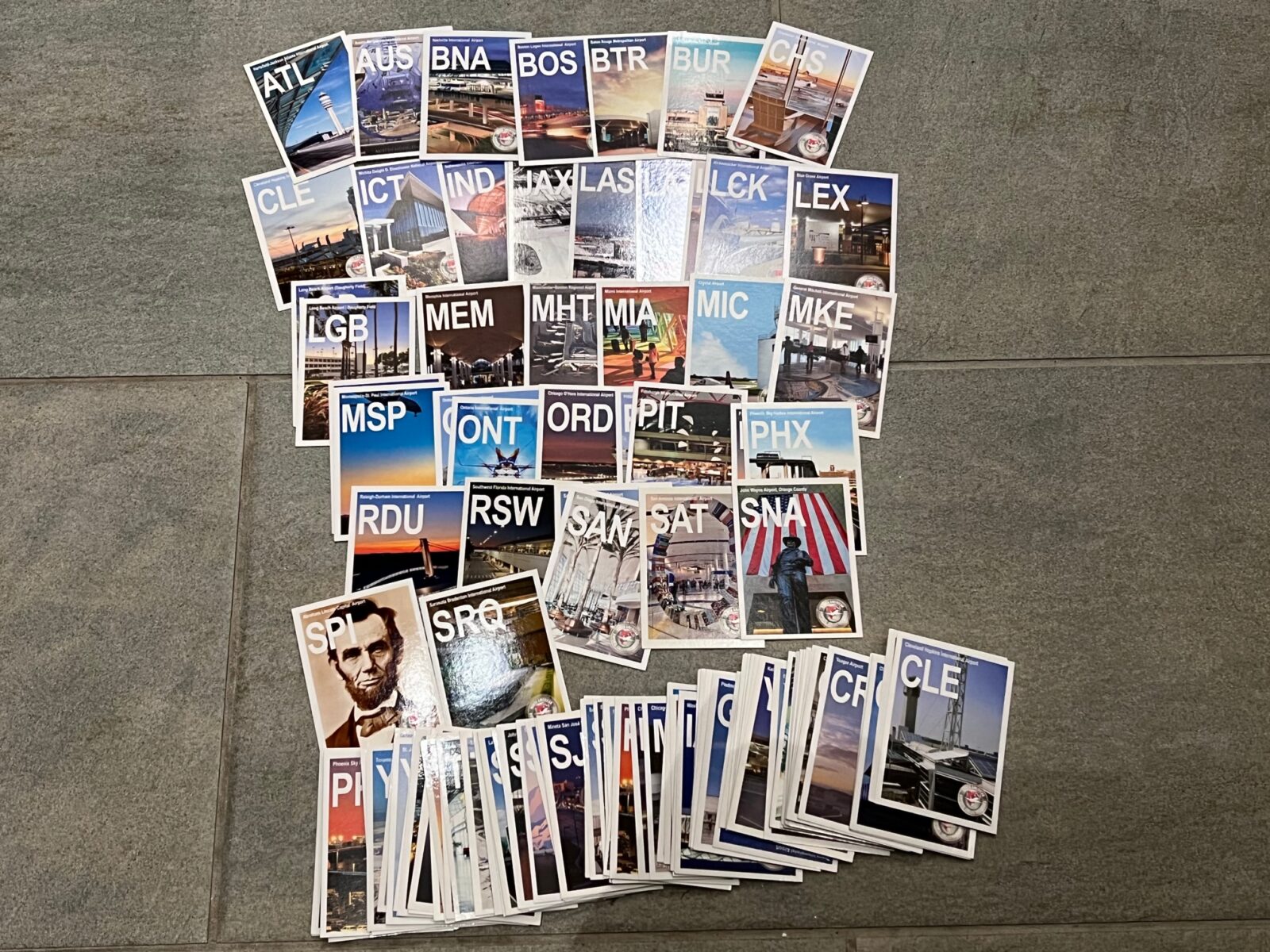
The collectibles department at Stuck at The Airport was thrilled to receive a package this week from our friends at Airport Council International-North America.
Inside was an almost complete set of the colorful collectible trading cards airports around the country have been issuing every few years since 2014. The number of participating airports has grown over the years and, at last count, there were more than 90 airports with their own trading cards.
Even better, some airports have issued multiple versions of their trading cards over several years.
The front of each card portrays an image of an airport and the airport code. On the reverse of each card are factoids about the airport pictured.
Want your own set of airport trading cards?
Our set is going into the Stuck at The Airport museum archives. But you can start putting your set together by stopping at an information booth in any airport you visit. Participating airports with a stash of current cards distribute them out for free. Some airports also have trading cards for their therapy dogs too. So be sure to ask.
It’s been a while since a new batch has been issued. But we think a fresh new round of collectible airport trading cards would be a great way to celebrate what feels like a very robust return to travel.
Which cards do you have? Please share your tips on how you got them.
